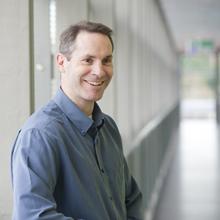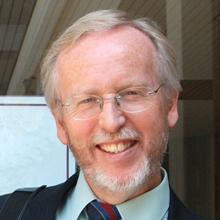Rising carbon dioxide levels increase risks to satellites
Climate change is widely attributed to the build-up of greenhouse gases, such as carbon dioxide, in the Earth's atmosphere. However, scientists from the School of Engineering Sciences at the University of Southampton have shown that the impact of carbon dioxide is being felt in space too.
Dr Hugh Lewis from the School will present a paper to the Fourth European Conference on Space Debris at the European Space Operations Centre (ESOC) in Germany this week indicating that increasing levels of CO2 are causing the amount of space debris orbiting the Earth to increase faster than previously thought.
Whilst CO2 is causing a global rise in temperature at the Earth's surface, it has the opposite effect in the upper part of the atmosphere known as the thermosphere. Here, in a region of space that contains the International Space Station and many other satellites, the temperature and the atmospheric density are falling rapidly.
Evidence from the Naval Research Laboratory in the USA suggests that the atmospheric density at these heights could be halved in the next 100 years. At first glance, this is good news for satellite operators: it will take longer for their satellites to re-enter the atmosphere. However, the research conducted at the University of Southampton in collaboration with QinetiQ shows that in the later half of this century satellites would be at greater risk from collisions with orbiting debris.
Collisions between objects orbiting the Earth can release as much energy as ten sticks of dynamite because of the enormous speeds involved, around ten kilometres per second. These events can subsequently produce hundreds of thousands of objects larger than 1cm - each one a collision risk to satellites and used rocket stages.
According to the research team's initial predictions a process known as 'collision cascading' - where the number of collisions in orbit increases exponentially - could occur much more quickly in the region of space between 200 km and 2,000 km above the Earth in response to rising CO2 levels. Simulations of a 'business as usual' scenario, where satellites are launched and destroyed at the rate they are now, show a 17 per cent increase in the number of collisions and a 30 per cent increase in the number of objects larger than 1cm by the end of the 21st century.
Dr Lewis stresses that steps are already being taken to diminish the threat posed by orbiting debris. The Inter-Agency Space Debris Coordination Committee (IADC), an international governmental forum that coordinates activities related to the issues of debris in space, has produced a set of guidelines that identify mitigation options. Whilst Dr Lewis' research has implications for these guidelines, he believes that they will remain effective measures: "We are only now beginning to understand the impact that polluting the atmosphere is having on space, but our knowledge of the problems posed by space debris is reliable," he commented.
The research was undertaken by Dr Lewis, with Dr Graham Swinerd and Charlotte Ellis of the School of Engineering Sciences, and Dr Clare Martin of QinetiQ.
Related Staff Member
Related Staff Member
Notes for editors
- A digital image is available from Media Relations.
- The paper on research by Dr Lewis, Dr Graham Swinerd, Charlotte Ellis and Dr Clare Martin 'Response of the space debris environment to greenhouse cooling', will be presented at the Fourth European Conference on Space Debris, Darmstadt, Germany, 18 - 20 April, 2005.
- The University of Southampton is a leading UK teaching and research institution with a global reputation for leading-edge research and scholarship. The University has around 20,000 students and nearly 5000 staff. Its annual turnover is in the region of £270 million.
- QinetiQ is Europe's largest science and technology company and has led UK space technology since the late 1950s. QinetiQ operates in the fields of spacecraft technology, space systems, remote systems and satellite communications.

